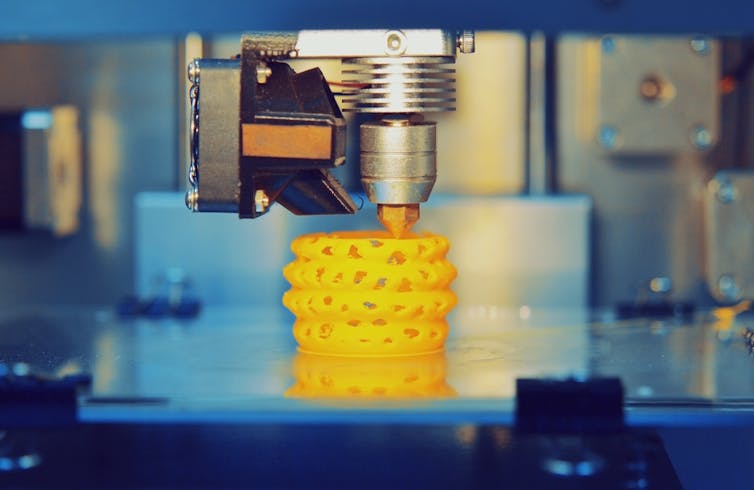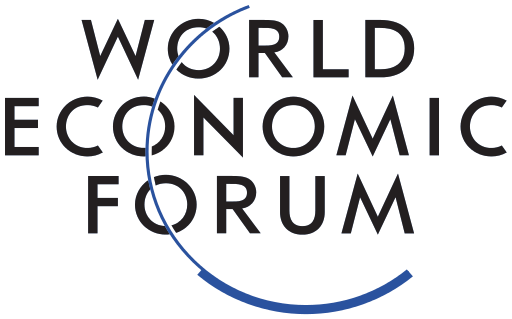Jennifer Johns, University of Bristol
Global leaders have descended on the Swiss ski resort of Davos for the World Economic Forum’s annual meeting. This year’s theme is “Globalisation 4.0: Shaping a Global Architecture in the Age of the Fourth Industrial Revolution”.
On the agenda is how countries can respond to and shape changes in how goods are produced, distributed and consumed. It is based on the idea that the world is entering a fourth industrial revolution, where a new wave of technological progress will launch us into a new era of globalisation. But while the world’s leaders pin their hopes for economic growth on a technological leap, the rest of us are left to wonder what the implications may be.
The first industrial revolution saw the mechanisation of production, using water and steam power. This dramatically transformed how people lived and worked. The second industrial revolution used electric power to create mass production. The third saw the automation of production using electronics and information technology.
The fourth industrial revolution is characterised by a fusion of technologies that is blurring the lines between the physical and digital. It is based not just on digitisation but on the integration of new and emerging technologies such as robotics, artificial intelligence, big data and 3D printing. These will combine into the “factories of the future”, which are wholly automated. Supply chains will be transformed with predictions that production will become more local to consumers.

MarinaGrigorivna / Shutterstock
There is some evidence that progress towards this vision is happening. 3D printing is quickly advancing. Digitising manufacturing technology enables production systems to be integrated and intelligent. Many governments have developed policies designed to support the factory of the future, such as Germany’s Industrie 4.0 and the UK’s industrial strategy.
A surprising choice
The logic of the World Economic Forum’s choice to focus on Globalisation 4.0 is connected to debates in industry and among policy makers about the potential transformation of production and consumption. This begins with a shift in how goods are manufactured. The Schumpeterian “creative destruction” thesis is increasingly used to justify the fourth industrial revolution idea. Schumpeter argued that capitalism is driven not by incremental efforts to cut costs and boost profits in a competitive market (as Adam Smith suggested) but by the pursuit of game-changing technological transformations.
But focusing on this at Davos is surprising, given the plethora of highly troubling issues facing the global economy. These include renewed concerns about the environment, geopolitical tensions, the rise in nationalism and migration crises.
The focus on technology may have been chosen precisely because, at first glance, it is apolitical and uncontentious. Surely everyone can benefit from technological improvement? But the Davos agenda does not appear to critique the very notion of this new globalisation enough. It assumes our inevitable progression towards this vision and fails to question whether it is even a desirable future.
Mixed fortunes
Globalisation 4.0 is based on the assumption that globalisation is a perpetual, unstoppable force. Klaus Schwab, founder of the World Economic Forum, recently said that at the core of Globalisation 4.0 is the understanding that globalisation won’t disappear. He said it will deepen, based on the connectivity of national digital and virtual systems and the related flow of ideas and services. Yet the current nationalism around technology and the increase in trade barriers suggests not.
Nor does the theme indicate that much attention is being paid to the implications of the fourth industrial revolution. Technological shifts are disruptive. The WEF suggests it has the potential to raise global income levels and improve the quality of life for populations around the world. But this is contrary to the effects we’ve seen of globalisation so far.

Shutterstock
Unfortunately, capitalism and globalisation have benefited some but not others and there is currently little evidence that Globalisation 4.0 could be any different. As the WEF acknowledges, greater inequalities could result, particularly through the disruption of labour markets.
Increased automation will radically alter the structure of work in the global economy. What will the displaced workers do? Deindustrialisation in advanced economies has created some profound difficulties including unemployment and poverty. These have still not been adequately addressed. So it looks like we could enter the fourth industrial revolution without solving some serious problems remaining from the third.
Proponents of Globalisation 4.0 may argue that a greater number of highly skilled, highly paid jobs will be created instead. This could be partially true, but those industries charged with producing the fourth industrial revolution are repeatedly asking governments to help increase education and training in STEM subjects, especially engineering.
The Davos agenda states that “global growth must be inclusive and sutainable”.
This fails to recognise the rise and importance of “degrowth” movements. Instead of a focus on GDP growth, these emphasise well-being, conviviality and open, localised economies.
Davos is stuck in 20th century understandings of the global economy, viewing “progress” as being achieved through economic growth. This year’s meeting also runs the risk of being irrelevant thanks to the notable absences of leaders like Donald Trump, Theresa May and Emmanuel Macron. Perhaps the economic thinking upon which the WEF is based needs a revolution of its own in order to meet the challenges of future technological change.![]()
Jennifer Johns, Reader in International Business, University of Bristol
This article is republished from The Conversation under a Creative Commons license. Read the original article.

